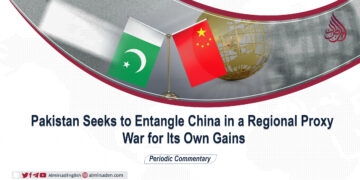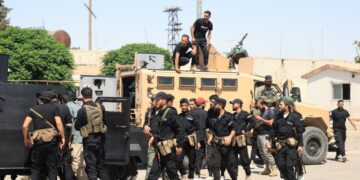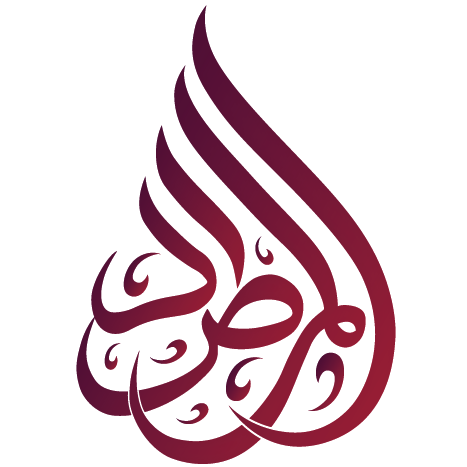Written by: Shamsullah Shaheer
Over the past three years, leading up to Shahbaz Sharif’s second term, relations between Pakistan and the United States have been severely strained. The U.S. defeat in Afghanistan further exacerbated tensions between the Pakistani regime and Washington. Pakistan’s role in facilitating the U.S. occupation—by providing airspace, ground routes, and logistical support—fueled tensions, especially as the Pakistani regime sought to exploit the conflict for its own political and economic interests.
However, with the military-backed elections in February 2024 and the subsequent formation of Shehbaz Sharif’s coalition government in March, efforts have been made to restore ties with the United States.
In pursuit of this objective, Pakistan’s Chief of Army Staff, General Asim Munir, embarked on a 12-day visit to the United States, engaging in high-level negotiations to secure financial assistance amid Pakistan’s dire economic, political, and security crises. The primary objective was not only to revitalize Pakistan’s struggling economy but also to acquire new military projects that could be used to further regional instability.
Facing a deteriorating security landscape and economic hardships, Pakistan has sought to manage its internal crisis and consolidate control by acquiring the ISIS project from the U.S. and Tajikistan, aiming to exert pressure on the Islamic Emirate of Afghanistan (IEA).
The cordial relations among these three nations were fostered during the administration of Shahbaz Sharif. John Bass, the Deputy Acting Secretary of State for Asian Affairs of the United States, visited Pakistan and conducted naval exercises between the American and Pakistani governments in Karachi.
Furthermore, last month, Pakistan announced Operation Azm-e-Istehkam. A week after the announcement, it conducted joint ground exercises with the United States in Punjab. These exercises recently concluded after two weeks of training, educating troops in various fields.
Punjab aims to signal to nations such as Iran, China, and Russia that there exists collaboration among us, and we can pose challenges and impediments against the implementation of significant projects and joint endeavors in the region.
Simultaneously, just days ago, Shehbaz Sharif met with the President of Tajikistan, where both leaders discussed counterterrorism efforts in Afghanistan and reiterated calls for an “inclusive government” in Kabul.
However, this narrative is highly misleading. Tajikistan itself is reportedly recruiting ISIS members, while Pakistan provides them with safe havens.
The joint military drills between Pakistan and the United States are not merely routine exercises but calculated maneuvers intended to:
– Destabilize the region, particularly along the Durand Line.
– Send a warning to nations strengthening ties with the Islamic Emirate of Afghanistan (IEA).
– Undermine the emergence of a strong central government in Afghanistan.
The United States, despite its military defeat in Afghanistan, remains unwilling to relinquish Afghanistan’s geopolitical significance to former adversaries such as Russia, China, and Iran. Consequently, it continues to support Pakistan’s destabilizing activities, seeking to maintain leverage in the region.
















































